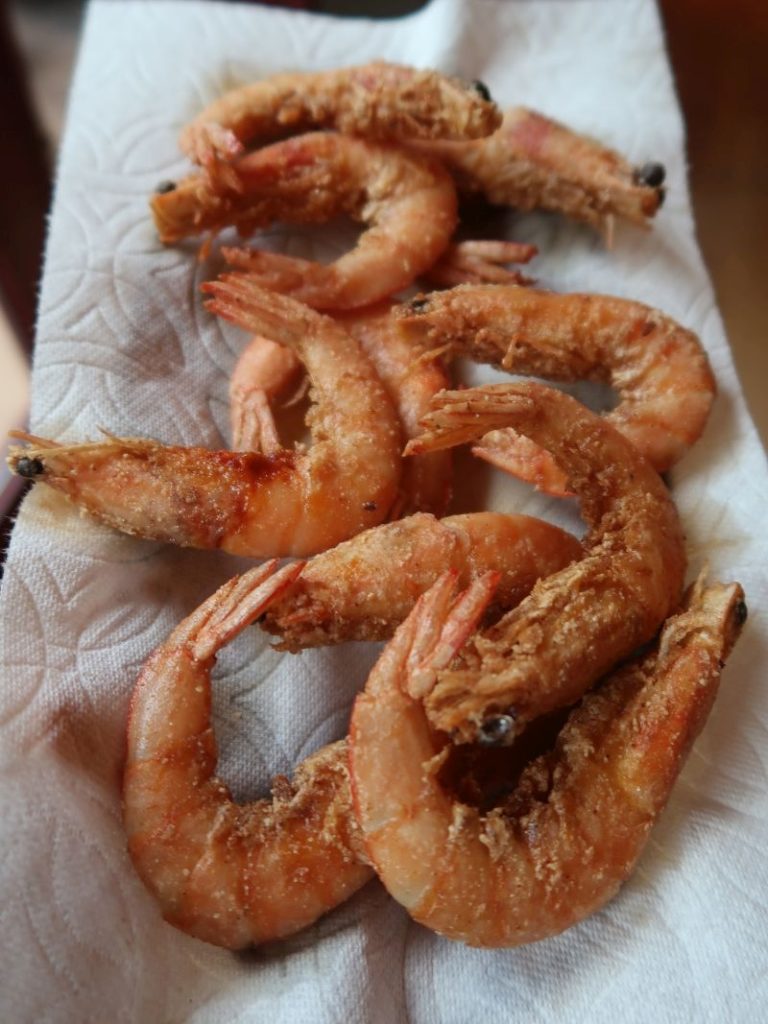
One of the ingredients that vexes me as a cookbook writer and home cook is shrimp. It can be challenging to buy at the grocery store because there are so many options. Mainstream markets have inventories that differ from Asian and other international markets where there is a wider range of options, including head-on shrimp and sometimes live shrimp too. When I write a recipe that includes shrimp, I consider how to best guide cooks to choose shrimp that comes close to what I use for a recipe. Sometimes, it’s easy and other times it’s not.
Shrimp isn’t chicken because shrimp may be sold peeled or shell-on, cooked or raw, and in various sizes. For many years, recipes described shrimp simply as small, medium, large, extra-large and jumbo. It was up to the cook to eyeball shrimp at the store. But like onion sizing, it all depends on what’s at the store when you show up to shop. Things seemed resolved once shrimp count got regularly worked into recipes and you’d think that ambiguity was gone but when it comes to shrimp sizing, there isn’t one set standard. On a recent cookbook project, a copyeditor differed with me on my shrimp count size and altered a few recipes, leading to my food stylist buying the wrong size of shrimp for our photoshoot. They were too small and we had to repurchase the shrimp and reprep them. Shrimp is expensive and can be time consuming to prepare for a recipe. Money and time are valuable so here’s my take on buying shrimp. I hope you find this information helpful and please, add your insights!
Shrimp Sizes: Count vs. Girth
Those numbers at the seafood counter refer to the number of shrimp per pound. There is a range but like jeans sizing, people have different standards for what’s small, medium, large, etc. Canvasing the internet and my grocery stores, I’ve settled on the following counts for sizing. That said, sometimes you can’t tell what’s what in the seafood case. To be honest, this is how I gauge shrimp size: First, if there’s a count displayed, I check that out for a ballpark range. Then, I verify the size by eyeballing the shrimp’s girth at its widest section and compare it to my fingers. For example, I’ll hold up my pinkie finger to a “small” shrimp to decide if it’s really small for my needs. Your hands differ from mine so use a ruler to gauge your own hand.
Here’s a table that I included in Vietnamese Food Any Day to help you at the store. The width is based on my hand, which is neither small or large.
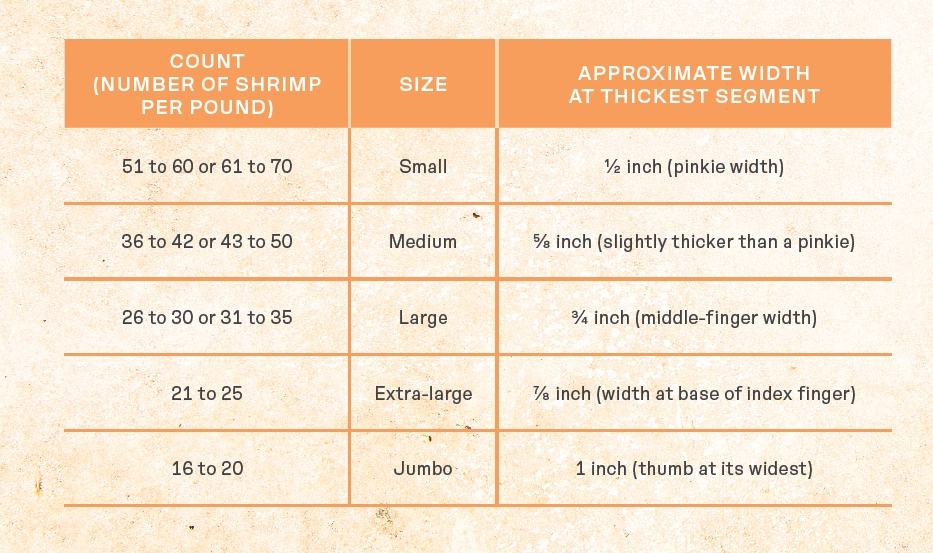
Frozen vs Fresh Shrimp
You're likely eating previously frozen shrimp because most shrimp sold a neighborhood grocery store has been frozen and thawed. Specialty markets may offer fresh or live shrimp, and those are delicious, precious, and fragile – buy and eat them the same day! When checking out shrimp at a regular market, if the shrimp has some ice still attached, ask for a few extra because why should you pay for ice? (Note that this bag of shrimp has a funky count size that doesn't fit my table; that's because the shrimp are a mixed bag of medium and small shrimp.)
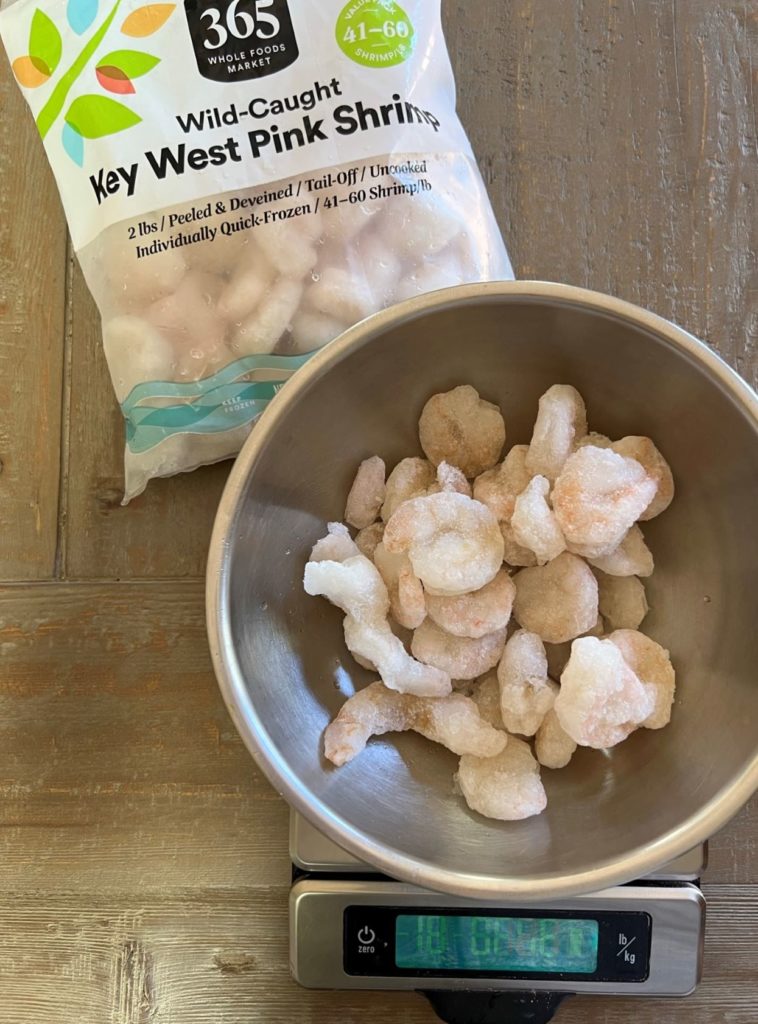
To save money and time, I buy large quantities of frozen shrimp when it is on sale, or I buy 2-pound bags of frozen shrimp at the market. The price is always better but the savings are a bit less than you think simply because the shrimp are often individually quick frozen (to prevent sticking together) so there is a layer of ice surrounding each one. I recently thawed 12 ounces of peeled shrimp and netted 9 ounces after thawing and patting dry. The shrimp are tasty pink gulf shrimp but the $9.99 per pound frozen price is now more like $13.50 per pound. Shell-on shrimp costs about that price so I save a little but not as much as I thought!
Phosphates
A lot of shrimp is processed with phosphates to plump them up and prevent drying during cooking. Those shrimp tend to remain looking translucent when cooked. Many consumers like the texture of shrimp processed with phosphates, but the additive can be misused, according to the Global Seafood Alliance. I find the texture and sometimes flavor of shrimp processed with phosphates to be a bit strange – overly snappy, so I aim for shrimp that do not include phosphates. That’s hard to do when you’re buying from a seafood case. If you’re curious, do a comparison via frozen shrimp that’s processed with and without phosphates. You may find no difference between the two.
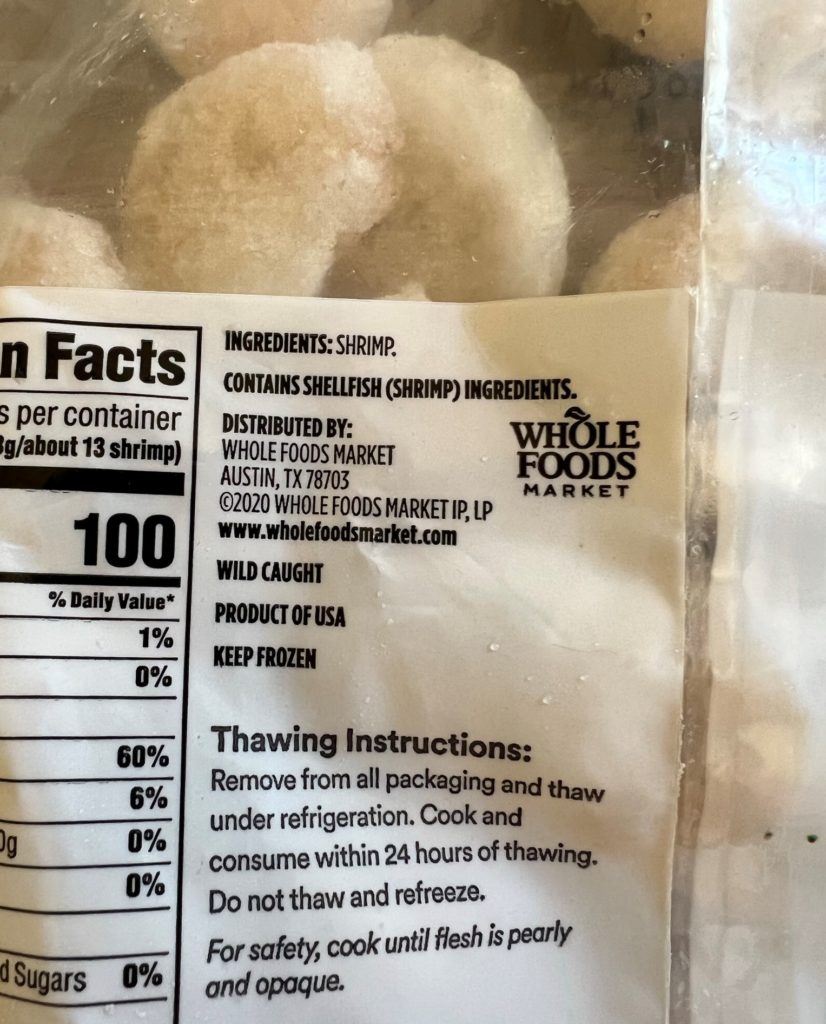
Pre-Peeled vs EZ Peel vs Shell-On
Every once in a while, when I’m super lazy, I buy pre-peeled shrimp but in the main, I go the slow route and purchase shell-on. EZ peel shrimp can have a bland flavor. One fishmonger suggested that the lackluster flavor was caused by the shrimp being processed with a lot of water to remove the intestinal tract. I don’t mind peeling and deveining shrimp for the best flavor. The shells from shell-on shrimp yield tasty stock too! Freeze them and treat them as an ingredient. Shrimp costs too much to waste.
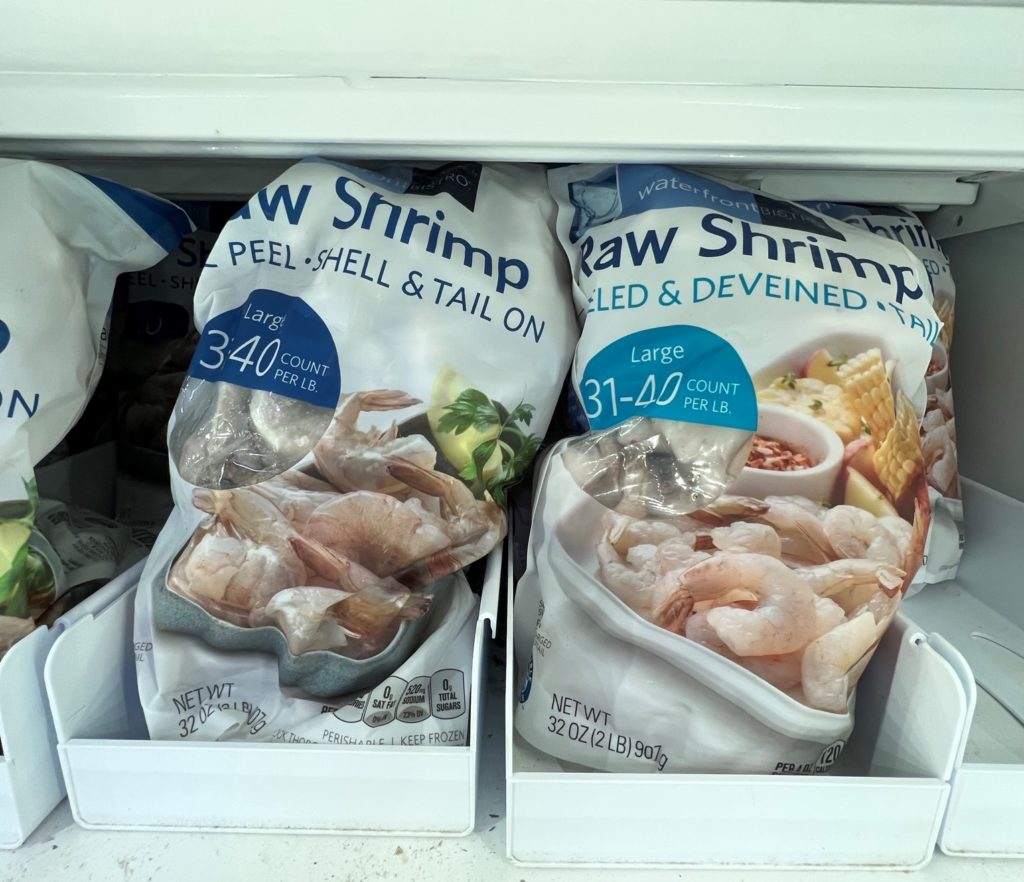
Headless or Head-On
Most shrimp sold at mainstream markets are headless. Head-on shrimp contain good flavor in the head for soups and salt and pepper shrimp. They’re handsome when grilled whole too. Head-on shrimp needs to be trimmed of their pointy, spear-like rostrum, which can scrape the roof of your mouth when you eat the shrimp. Use scissors to snip the rostrum off; and while you’re at it, snip the swimmerets and other potentially tickly appendages too! If I'm serving shell-on shrimp, I snip and trim to neaten them up for diners.
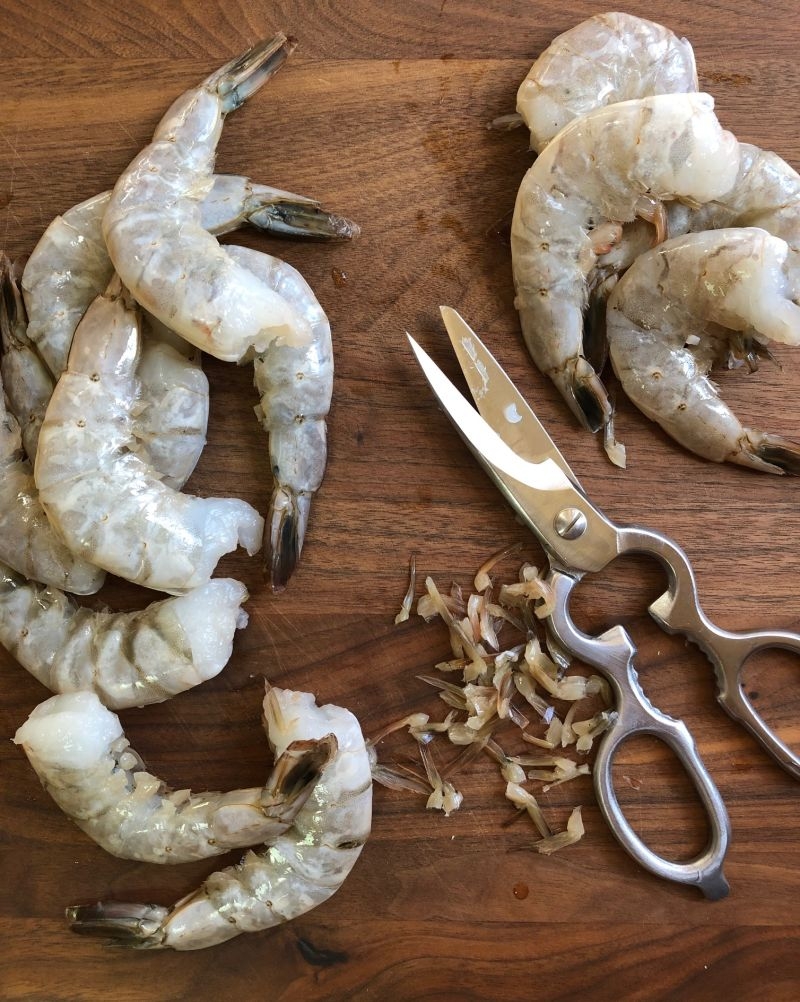
White vs. Pink vs. Red vs. Tiger vs. Brown
Sizes, phosphates, shells and now the color of the shrimp shells? There are so many options! For me, the shells boil down to whether or not I want to eat them. Asian dishes such as salt and pepper shrimp, are made with shell-on white shrimp. White refers to the shell color of the shrimp. White shrimp tend to have thinner shells. The shells tend to stick to the shrimp flesh so peeling white shell shrimp is usually not easy. (Note the "colossal" size!)
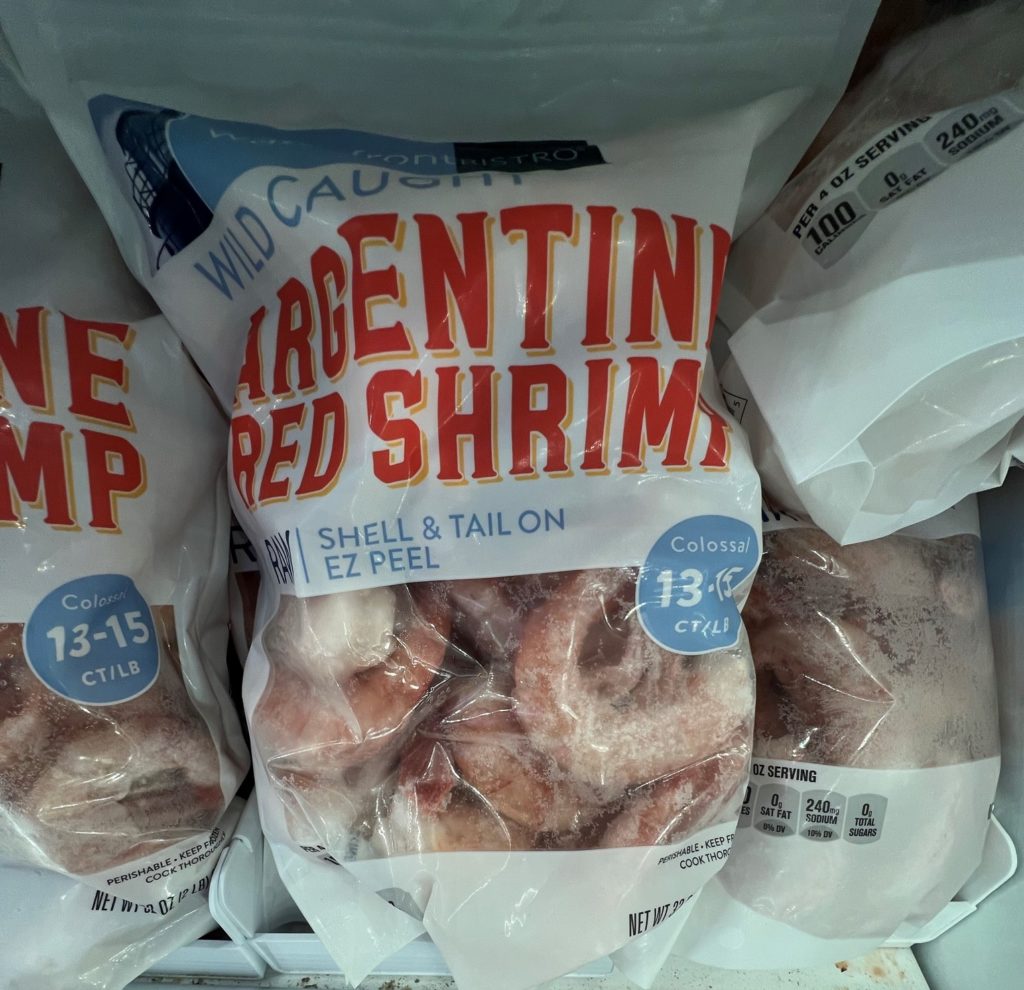
Pink and red shrimp have relatively thick, stiff shells that make awesome shrimp stock; the flesh can be lobster-ish. Tiger shrimp sport stripes on their shells and their flesh turns wonderfully sweet and a handsome orange when cooked. Brown shrimp have average flavor; I don't come across them often. (I’m sure I’ve missed some but these colors are what I’ve encountered in my grocery shopping.)
Buy Domestic or Imported Shrimp? Wild-Caught or Farmed?
Our love of shrimp may come to us with hidden ethical and sustainability costs. A few years ago, Melissa Clark wrote on the subject for the New York Times in this well-reported article. Vietnam farms a lot of shrimp that’s exported to the United States but unfortunately, much of the Viet shrimp is on the Seafood Watch Avoid list. However, there is progress, such as what the Monterey Bay Aquarium is doing to help shrimp farmers in Ca Mau, Vietnam. If you want to support Southeast Asian shrimping, there are many Vietnamese American shrimpers in Louisiana (Gulf of Mexico). All that said, whenever possible, I buy domestic shrimp; most of it is wild-caught and it is more local than imported shrimp. Its premium price reflects better quality and better stewardship of our resources. And, when you eat quality, tasty shrimp, you can feel satisfied with less too.
How Much Shrimp to Buy for a Recipe
When the universe is aligned, you hit it on the head in terms of buying exactly what a recipe calls for. But when a recipe calls for peeled and deveined shrimp and you’re buying shell-on or EZ-peel shrimp, hedge by about 20 percent. That’s to say, if you need 8 ounces of peeled shrimp meat, buy 10 ounces of unpeeled shrimp. You’ll have more than what you need but it’s better than having less. If a recipe calls for 8 ounces of shell-on shrimp and you’re buying frozen, buy a generous 8 ounces because there will be water waste once the shrimp thaw.
Storage
I usually use shrimp within 24 hours of purchase or thawing; I often rinse and transfer them to a bowl and cover tightly to store in the fridge. If I have to hold them for up to 72 hours, I will peel the shrimp, toss them in salt to refresh, rinse, and drain well. I pat the shrimp dry with a paper towel and refrigerate in an air-tight container with another paper towel to absorb moisture. If shrimp develops an off-ammonia like smell, discard it.
I think a lot about shrimp because it’s a favorite seafood, costs a lot, and I want cooks to make the most informed decision possible at the market. Please add your insights below.















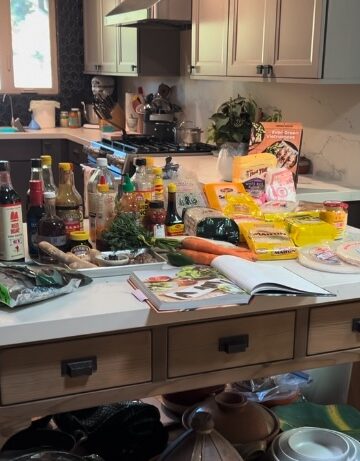
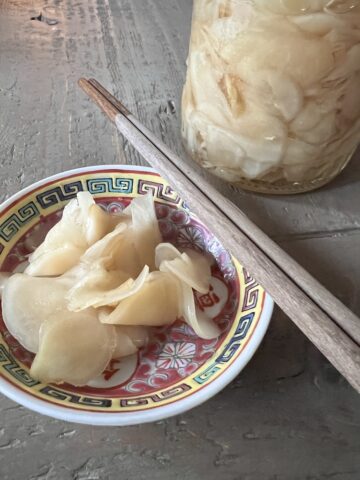
Minh N says
Great article and tips. Thanks, Andrea for sharing.
Andrea Nguyen says
Thank you Minh!
Brian Buchan says
I've not seen you site before, I enjoyed it, thank you.
I can use the info.
Andrea Nguyen says
Thank you, Brian! Welcome.